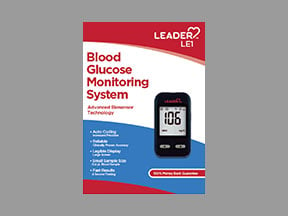
Blood Glucose Monitor System Coupons & Savings Card – Discount Prices from $18.61
My prescription
Edit
w/Device, Blood Glucose Monitor System (1 Kit)
Select pharmacy

Walgreens
$18.61
COUPON PRICEFree Blood Glucose Monitor System Savings Card

Walgreens
$18.61
Show this coupon to your pharmacist
ID
LHC7EFD723
PCN
CHIPPO
BIN
019876
GRP
LHX
This coupon is not insurance
Our coupons are free to use. Before paying, show the pharmacist your Blood Glucose Monitor System savings card to get your free discount. Use our filters below to edit the prescription box to match your needs. The Blood Glucose Monitor System prices will update based on your prescription needs. Above our Blood Glucose Monitor System coupons, you can change your location to see pharmacy prices and costs in other areas. We're here to help you buy Blood Glucose Monitor System at the lowest price with our prescription discount card.
Our coupons are free to use. Before paying, show the pharmacist your Blood Glucose Monitor System savings card to get your free discount. Use our filters below to edit the prescription box to match your needs. The Blood Glucose Monitor System prices will update based on your prescription needs. Above our Blood Glucose Monitor System coupons, you can change your location to see pharmacy prices and costs in other areas. We're here to help you buy Blood Glucose Monitor System at the lowest price with our prescription discount card.
